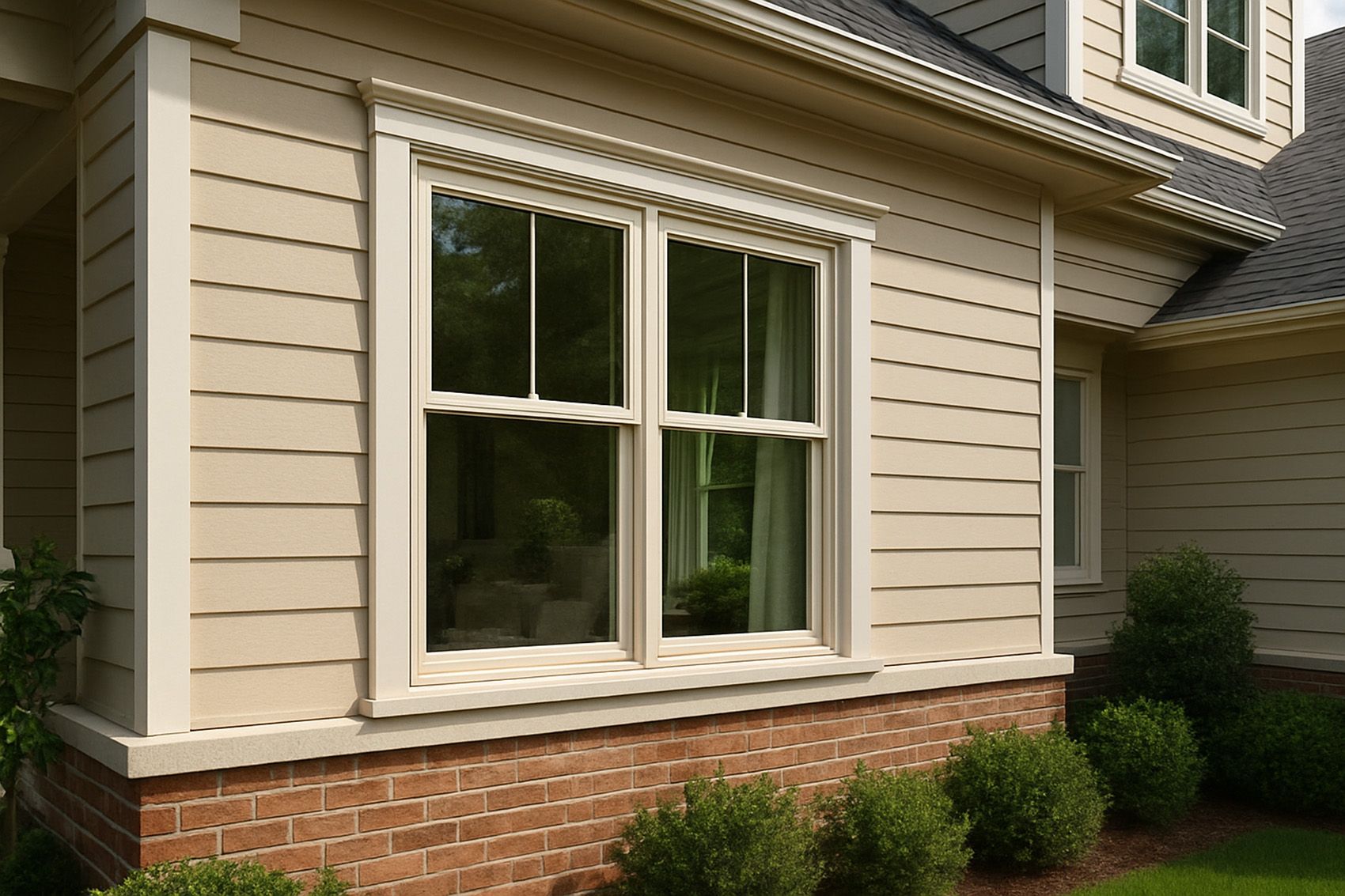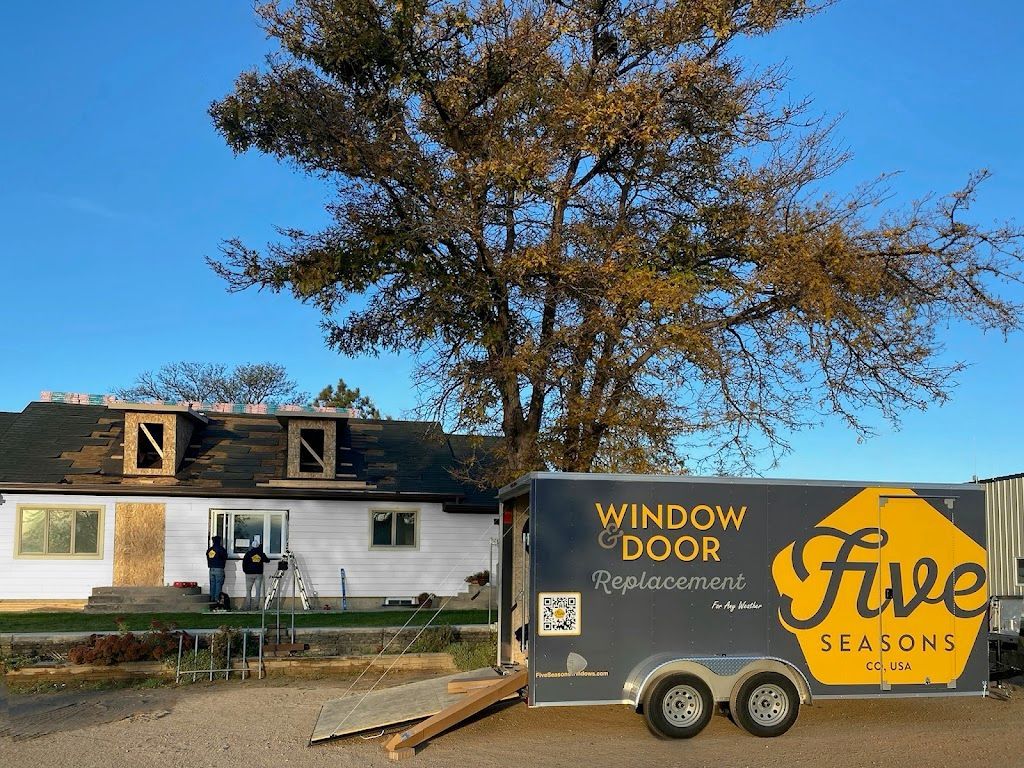Fiberglass vs vinyl windows benefits depend on timeline and priorities: vinyl windows cost 30-50% less initially but require replacement every 15-20 years, while fiberglass windows cost more upfront but last 30-40 years with superior energy efficiency, making fiberglass the better long-term financial choice for most homeowners.
According to the National Fenestration Rating Council, fiberglass windows provide 15-25% better thermal performance than vinyl alternatives while lasting twice as long, resulting in lower total cost of ownership despite higher initial investment, with lifetime savings often exceeding $3,000-5,000 per window through reduced energy costs and replacement frequency.
Choosing between fiberglass and vinyl windows requires understanding both immediate budget constraints and long-term financial implications. While vinyl offers attractive upfront savings, fiberglass provides superior durability, energy efficiency, and lifetime value that often justify the premium investment for homeowners planning to stay in their homes long-term.
Initial Cost Comparison and Budget Considerations
Purchase Price and Installation Costs
Vinyl windows typically cost $250-500 per window for quality units, while comparable fiberglass windows range from $400-800 per window, representing a 30-50% premium for fiberglass construction. This price difference reflects the superior materials and manufacturing processes required for fiberglass production.
Installation costs remain similar for both materials, with professional installation adding $150-300 per window regardless of frame material. The primary cost difference lies in the window units themselves, making vinyl attractive for homeowners with immediate budget constraints or short-term ownership plans.
Financing and Payment Considerations
The higher upfront cost of fiberglass windows may require financing options or phased installation schedules for budget-conscious homeowners. However, many contractors offer financing programs that can make premium materials more accessible while preserving long-term value benefits.
Energy efficiency rebates and tax credits often favor fiberglass windows due to their superior thermal performance, potentially offsetting 10-20% of the cost difference. These incentives improve the immediate affordability of fiberglass while enhancing long-term value propositions.

Long-Term Financial Performance
Service Life and Replacement Frequency
Vinyl windows typically require replacement every 15-20 years due to material degradation, seal failures, and reduced energy efficiency over time. Fiberglass windows often last 30-40 years with proper maintenance, effectively halving the replacement frequency and associated costs.
The extended service life of fiberglass translates to significant long-term savings through reduced replacement cycles. Homeowners who choose vinyl may face two complete window replacements over 30 years, while fiberglass owners avoid this expense entirely.
Total Cost of Ownership Analysis
When calculating total cost of ownership over 30 years, fiberglass windows often provide better value despite higher initial costs. The combination of longer service life, superior energy efficiency, and minimal maintenance requirements frequently results in lower lifetime expenses.
For example, vinyl windows costing $400 per unit that require replacement after 20 years result in $800 total cost plus energy penalties, while $600 fiberglass windows lasting 40 years provide better total value and performance throughout the period.
Energy Efficiency and Utility Savings
Thermal Performance Differences
Fiberglass frames offer superior thermal performance due to low thermal conductivity and dimensional stability that maintains seal integrity over time. This thermal efficiency translates to 15-25% better energy performance compared to vinyl alternatives in most climate conditions.
Vinyl windows can experience thermal expansion and contraction that stresses seals and reduces energy efficiency over time. Fiberglass dimensional stability prevents these issues, maintaining consistent energy performance throughout the window's service life.
Annual Energy Cost Savings
The superior thermal performance of fiberglass windows typically saves $50-150 annually per window in energy costs compared to vinyl alternatives. Over a 30-year period, these energy savings can total $1,500-4,500 per window, significantly offsetting the initial cost difference.
In extreme climates, the energy savings difference becomes even more pronounced, with fiberglass windows providing substantial utility bill reductions that justify the premium investment within 5-8 years through energy savings alone.
Durability and Maintenance Costs
Weather Resistance and Longevity
Fiberglass construction resists UV degradation, temperature cycling, and moisture exposure better than vinyl materials, maintaining structural integrity and appearance longer. This durability reduces maintenance costs and prevents premature replacement due to material failure.
Vinyl windows may experience color fading, brittleness, and seal failures after 10-15 years, particularly in challenging climates. These issues require repairs or early replacement that add to total ownership costs beyond the initial purchase price.
Maintenance Requirements and Expenses
Fiberglass windows require minimal maintenance beyond periodic cleaning and occasional hardware lubrication, with most manufacturers providing 20-30 year warranties covering materials and performance. This warranty protection provides financial security and peace of mind.
Vinyl windows may require more frequent maintenance including weatherstripping replacement, hardware adjustments, and potential frame repairs as materials age. These maintenance costs accumulate over time and should be considered in total ownership calculations.
Climate-Specific Performance Factors
Extreme Temperature Performance
In regions with significant temperature variations, fiberglass windows maintain consistent performance while vinyl alternatives may experience expansion and contraction issues that affect operation and energy efficiency. This stability provides better long-term value in challenging climates.
Fiberglass dimensional stability prevents the seal failures and air leaks that commonly develop in vinyl windows after repeated thermal cycling. This reliability ensures consistent energy performance and comfort throughout the window's service life.
UV Resistance and Color Stability
Fiberglass construction includes UV stabilizers that prevent degradation and color changes over time, maintaining appearance and performance for decades. Vinyl windows may experience fading and material degradation in high-UV environments, reducing both aesthetics and function.
The superior UV resistance of fiberglass provides long-term value protection by maintaining window appearance and avoiding the need for early replacement due to aesthetic deterioration that commonly affects vinyl installations.
Return on Investment Analysis
Property Value Impact
Fiberglass windows typically provide higher return on investment due to their premium positioning and longer service life that appeals to quality-conscious buyers. Real estate professionals often identify fiberglass windows as features that support higher property valuations.
While both materials improve home value compared to old windows, fiberglass installations often command premium pricing in real estate markets due to their reputation for quality and longevity. This market preference helps ensure strong return on investment.
Break-Even Timeline
Most homeowners reach break-even on fiberglass premium costs within 8-12 years through energy savings and avoided replacement expenses. After this point, fiberglass windows provide clear financial advantage through continued energy savings and extended service life.
Homeowners planning to remain in their homes more than 10 years typically find fiberglass provides better financial value, while those with shorter timelines may prefer vinyl's lower initial cost despite higher long-term expenses.
For homeowners choosing fiberglass windows, exploring design options can further enhance the value proposition. For comprehensive information about premium fiberglass window features and aesthetic possibilities, explore our detailed guide: 🔗 Fiberglass Windows with Wood Interior Look: Beauty Meets Performance

People Also Ask About Fiberglass vs Vinyl Windows Benefits
1. Which is cheaper in the long run: fiberglass or vinyl windows?
Fiberglass windows are typically cheaper in the long run despite higher upfront costs, due to their 30-40 year service life compared to 15-20 years for vinyl windows. The total cost of ownership over 30 years often favors fiberglass through avoided replacement costs and superior energy efficiency.
For example, vinyl windows costing $400 that need replacement after 20 years result in $800 total material cost plus installation expenses twice. Fiberglass windows costing $600 that last 40 years provide better value while delivering superior energy performance throughout their service life.
The energy savings from fiberglass thermal performance typically add $50-150 annually per window, accumulating to $1,500-4,500 over 30 years. This energy advantage alone often justifies the initial cost difference between materials.
2. Do fiberglass windows really save more energy than vinyl?
Yes, fiberglass windows typically provide 15-25% better energy performance than vinyl alternatives due to superior thermal properties and dimensional stability. Fiberglass has lower thermal conductivity and expands at nearly the same rate as glass, preventing seal failures that reduce energy efficiency.
Vinyl windows experience thermal expansion and contraction that can stress seals and create air leaks over time, reducing energy performance. Fiberglass dimensional stability maintains consistent thermal performance throughout the window's service life.
Independent testing by organizations like the National Fenestration Rating Council consistently shows fiberglass windows achieving better U-factors and air leakage ratings than comparable vinyl products, translating to measurable energy savings for homeowners.
3. How much longer do fiberglass windows last compared to vinyl?
Quality fiberglass windows typically last 30-40 years compared to 15-20 years for vinyl windows in most climates. This difference reflects fiberglass's superior resistance to UV degradation, thermal cycling, and material fatigue that affects vinyl over time.
In harsh climates with extreme temperatures or high UV exposure, the longevity difference becomes even more pronounced. Fiberglass maintains structural integrity and appearance while vinyl may experience brittleness, fading, and seal failures within 10-15 years.
The extended service life of fiberglass represents significant financial value through avoided replacement costs. Homeowners choosing vinyl may face complete window replacement twice during the time fiberglass windows continue providing reliable service.
4. Are fiberglass windows worth the extra upfront cost?
For most homeowners planning to stay in their homes more than 10 years, fiberglass windows justify their premium cost through energy savings, longevity, and avoided replacement expenses. The break-even point typically occurs within 8-12 years through reduced energy bills and maintenance costs.
The value proposition becomes stronger in extreme climates where energy efficiency matters most and material durability faces greater challenges. Fiberglass performance advantages become more pronounced and financially significant in these demanding conditions.
Beyond financial considerations, fiberglass windows provide superior comfort, reduced maintenance, and peace of mind through extended warranties and proven durability. These quality-of-life benefits often justify the investment even when financial returns are marginal.
5. Which material is better for extreme climates?
Fiberglass significantly outperforms vinyl in extreme climates due to superior dimensional stability, UV resistance, and thermal properties. In very hot or cold regions, vinyl windows may experience expansion, contraction, and material degradation that affects performance and longevity.
Fiberglass maintains consistent performance in temperature ranges from -40°F to 140°F, while vinyl may become brittle in extreme cold or soft in extreme heat. This stability ensures reliable operation and energy efficiency regardless of climate challenges.
For coastal areas with salt exposure, desert regions with intense UV, or northern climates with severe freeze-thaw cycles, fiberglass provides the durability and performance reliability that justify its premium cost through superior long-term results.
Our Take
At Five Seasons Windows & Doors, we've installed thousands of both vinyl and fiberglass windows throughout Colorado and consistently see fiberglass provide better long-term value for homeowners despite the higher initial investment. Our experience shows that while vinyl appeals to budget-conscious buyers, fiberglass delivers superior performance that justifies the premium over time.
Colorado's climate presents particular challenges including intense UV exposure, dramatic temperature swings, and occasional severe weather that test window materials continuously. In these conditions, we see fiberglass windows maintain their performance and appearance while vinyl alternatives often show signs of degradation within 10-15 years.
We believe the decision between vinyl and fiberglass should consider total cost of ownership rather than initial purchase price alone. For homeowners planning to remain in their homes long-term, fiberglass typically provides better financial value through energy savings, longevity, and reduced maintenance requirements that compound over decades.
Final Takeaway
Fiberglass vs vinyl windows benefits analysis reveals that while vinyl offers attractive upfront savings, fiberglass provides superior long-term financial value through extended service life, better energy efficiency, and reduced maintenance requirements. The choice depends on homeowners' timeline, budget priorities, and performance expectations.
For homeowners with immediate budget constraints or short-term ownership plans, vinyl windows provide acceptable performance at lower initial cost. However, those planning to remain in their homes more than 10 years typically find fiberglass delivers better total value through avoided replacement costs and ongoing energy savings.
Understanding these financial implications helps homeowners make informed decisions that align with their circumstances and priorities. Professional guidance can help evaluate specific situations and determine which material provides optimal value based on individual needs, climate conditions, and long-term plans.
Get Started Today
Five Seasons Windows & Doors is Colorado’s top-rated local window company with 230+ 5-star reviews. We offer expert advice, no-pressure quotes, and flexible project options — including phased installs. Schedule your consult today.



